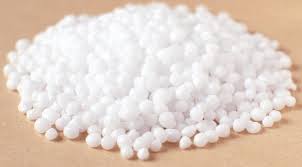Urea

Urea is a water-soluble substance, found in the stratum corneum – the outermost layer of the skin.
Normal skin has about 1% urea. In pathological skin conditions such as atopic dermatitis and extreme dry skin, there is a lack of urea in the skin. Urea plays an important role in keeping the skin moist and protecting it from the irritating and harmful effect of detergents.
It also has antibacterial and anti-inflammatory properties.
The level of urea in the skin changes, and it decreases after cleaning the skin and washing it with detergents.
It increases after using a preparation containing urea (the effect of one application remains for about 24 hours).
Urea is an important ingredient in cosmetic products that are designed to increase skin moisture and protect against skin irritations.
Clinical studies that tested the effect of urea as part of a cosmetic preparation, measured its effect on several parameters:
- Restore and increase the moisture level of the skin with regular application
- Its effect on the skin’s tendency to develop irritation from exposure to detergents (like SLS)
- The effect on water loss from the stratum corneum (TEWL)
- The effect on skin recovery after exposure to detergents.
The findings show that the use of urea at a concentration of 5% increases the ability of the skin to recover after exposure to detergents, decreases its sensitivity to detergents such as SLS and increases the hydration (day/moisture) of the skin. Subjects treated with a cream containing urea before exposure to the detergent developed less dryness and irritation compared to subjects treated with a normal cream without urea. Adding urea to cleaning lotions (10% concentration in the lotion) resulted in the subjects losing less moisture after washing, compared to the subjects who washed with normal soap without urea.
Urea also has a keratolytic effect. It is not recommended to use urea, at a daily level, in a product containing a high concentration. In the appropriate concentration, despite its ability to increase the penetration of other substances (that is, despite its “disruption” to the structure of the stratum corneum) it functions as a substance that increases the efficiency of the stratum corneum.
It is recommended for the treatment of extreme dryness of the skin, contact dermatitis, in creams designed to restore the moisture content of the skin and as an additive to soaps and washes that reduces the irritation they create.
